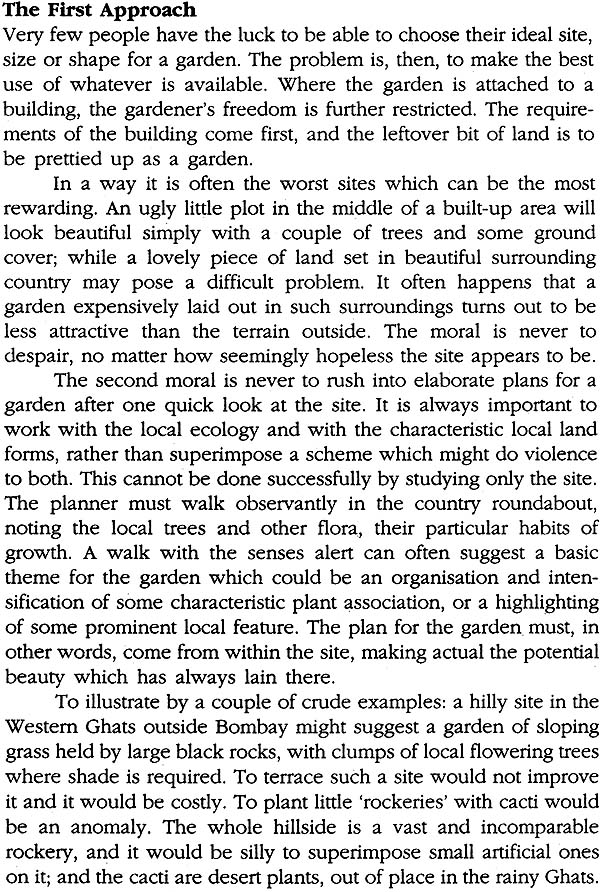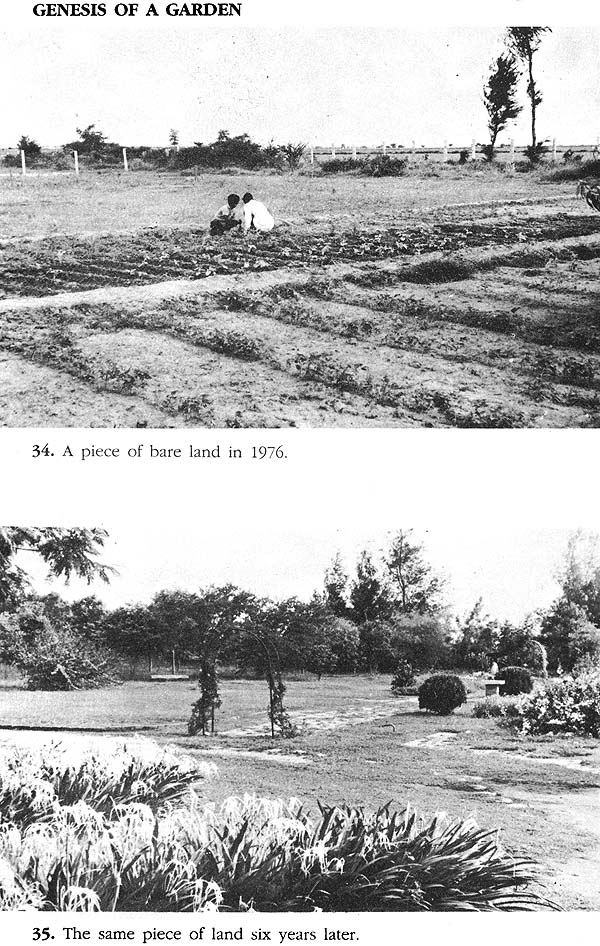
Gardens
Book Specification
| Item Code: | NAJ886 |
| Author: | Laeeq Futehally |
| Publisher: | National Book Trust, India |
| Language: | English |
| Edition: | 2008 |
| ISBN: | 9788123720593 |
| Pages: | 104 (49 B/W & 12 Color Illustrations) |
| Cover: | Paperback |
| Other Details | 8.5 inch X 5.5 inch |
| Weight | 220 gm |
Book Description
The standard books on gardening do not deal with the many-dimensional problems faced by those in charge of laying out and maintaining public grounds in India. In Gardens the author makes an attempt to discuss some of the consideration—social, aesthetic, horticultural and environmental—that have to be carefully balanced by those whose responsibility it is to create satisfactory environments in our country. The book also contains useful insights for the domestic gardener.
Laeeq Futehally, an ardent nature lover and freelance writer, worked as literary editor of Quest for twenty years. Her life-long interest in garden design found fulfillment when she was in charge of landscaping and planning the two gardens of Powai and Vihar near Bombay.
It has always seemed to me that making a garden should be considered a serious art form, and should be worthy of at least as much erudite and heated debate as is lavished on painting and sculpture. A garden is a four-dimensional aesthetic experience for, in addition to the usual three, it combines the dimension of time as well. Also, a garden must, without compromising its aesthetic values, be a functional place, a place where people can move or be still, and where children can run, play climb trees, swing on branches. It must, above all, and most particularly now in modern times, be a space which exudes peace and rest.
This book is not, as the reader will discover (no doubt to is disappointment) a handbook of horticultural information. It is merely a discussion of the values and attitudes which, I think, should inform the man who sets out to make a beautiful garden. Beneath the apparent self-confidence, it is also the chronicle of all the mistake I made in laying out my own garden. I think I may modestly claim to have made every mistake in the gardeners’ encyclopaedia, some of them twice over. Another limitation is that so far my only experience of gardening has been in Bombay and Bangalore. This may mean that some of the plants I have mentioned may be unsuitable for other parts of the country.
Since in writing a book it helps to imagine that one is addressing a definite audience, I have imagined that I was writing for an audience of young architects and civil engineers. Increasingly the job of laying out gardens and planning public places will be entrusted to these technicians; and while I have no doubt that they will have the requisite knowledge for doing the work competently, this book seeks to fan the passion, which they will find taking obsessive root as their garden begins to take shape. It has been said that no garden can be planned entirely on paper; there are too many unknown and unforeseeable elements involved. To work on a garden is to think about its aesthetic problems continuously, even when it seems to be complete. I think it help one to think better if one is reading about the subject, even if one does not happen to get directly useful information. In a way this book is an attempt to communicate at the level of values rather than of facts.
| Principles of Garden Design | 1-42 |
| Materials of Garden Design | 43-67 |
| Industrial Gardens | 69-76 |
| Public Gadens | 77-92 |











